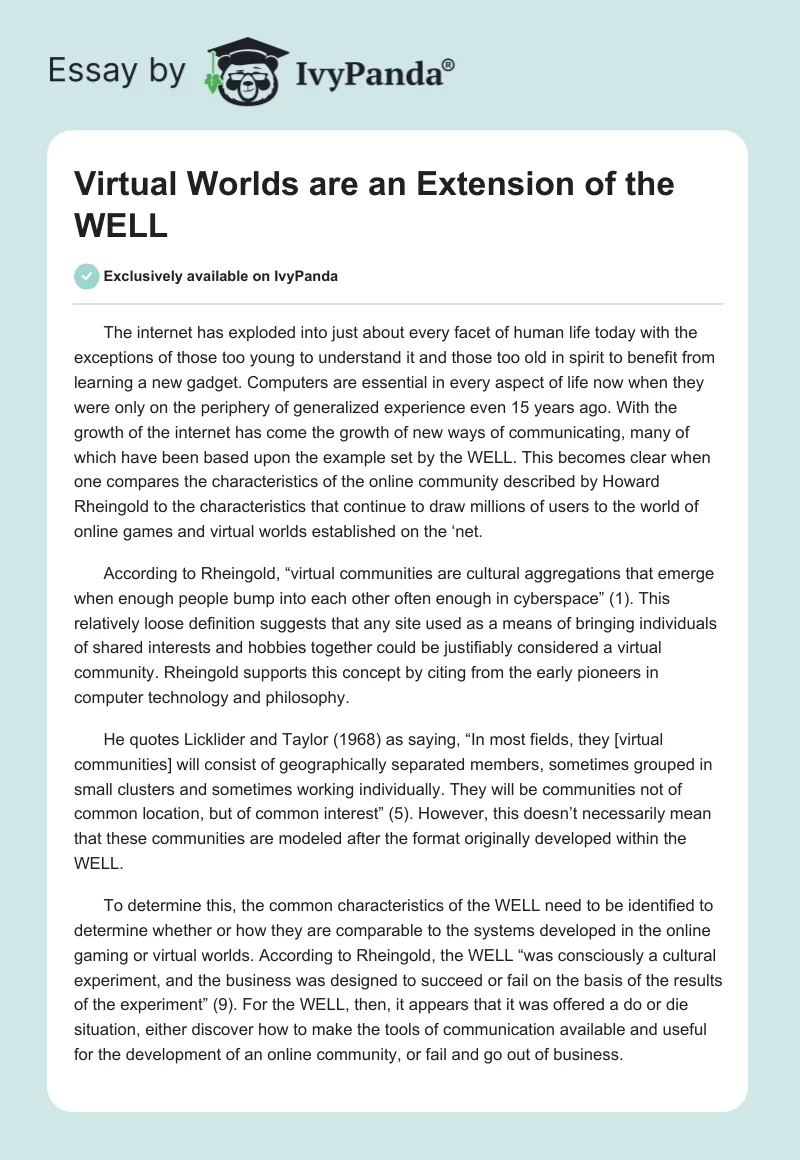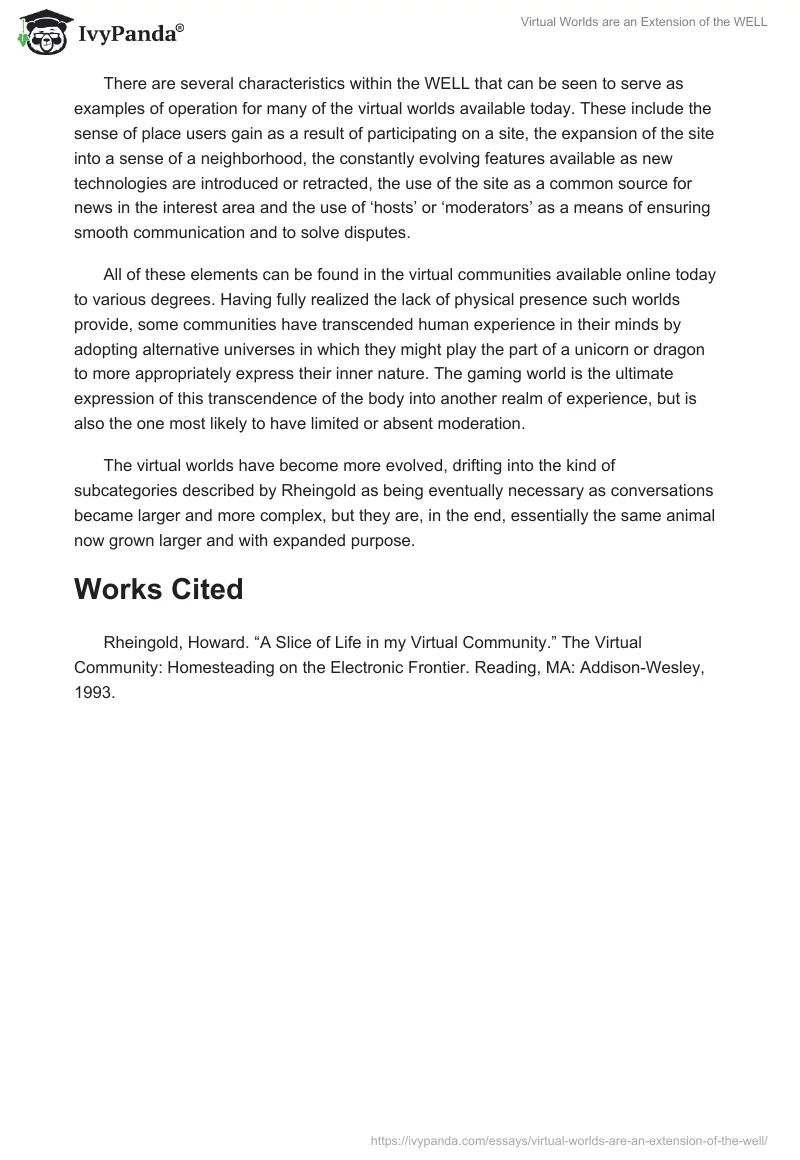The internet has exploded into just about every facet of human life today with the exceptions of those too young to understand it and those too old in spirit to benefit from learning a new gadget. Computers are essential in every aspect of life now when they were only on the periphery of generalized experience even 15 years ago. With the growth of the internet has come the growth of new ways of communicating, many of which have been based upon the example set by the WELL. This becomes clear when one compares the characteristics of the online community described by Howard Rheingold to the characteristics that continue to draw millions of users to the world of online games and virtual worlds established on the ‘net.
According to Rheingold, “virtual communities are cultural aggregations that emerge when enough people bump into each other often enough in cyberspace” (1). This relatively loose definition suggests that any site used as a means of bringing individuals of shared interests and hobbies together could be justifiably considered a virtual community. Rheingold supports this concept by citing from the early pioneers in computer technology and philosophy.
He quotes Licklider and Taylor (1968) as saying, “In most fields, they [virtual communities] will consist of geographically separated members, sometimes grouped in small clusters and sometimes working individually. They will be communities not of common location, but of common interest” (5). However, this doesn’t necessarily mean that these communities are modeled after the format originally developed within the WELL.
To determine this, the common characteristics of the WELL need to be identified to determine whether or how they are comparable to the systems developed in the online gaming or virtual worlds. According to Rheingold, the WELL “was consciously a cultural experiment, and the business was designed to succeed or fail on the basis of the results of the experiment” (9). For the WELL, then, it appears that it was offered a do or die situation, either discover how to make the tools of communication available and useful for the development of an online community, or fail and go out of business.
There are several characteristics within the WELL that can be seen to serve as examples of operation for many of the virtual worlds available today. These include the sense of place users gain as a result of participating on a site, the expansion of the site into a sense of a neighborhood, the constantly evolving features available as new technologies are introduced or retracted, the use of the site as a common source for news in the interest area and the use of ‘hosts’ or ‘moderators’ as a means of ensuring smooth communication and to solve disputes.
All of these elements can be found in the virtual communities available online today to various degrees. Having fully realized the lack of physical presence such worlds provide, some communities have transcended human experience in their minds by adopting alternative universes in which they might play the part of a unicorn or dragon to more appropriately express their inner nature. The gaming world is the ultimate expression of this transcendence of the body into another realm of experience, but is also the one most likely to have limited or absent moderation.
The virtual worlds have become more evolved, drifting into the kind of subcategories described by Rheingold as being eventually necessary as conversations became larger and more complex, but they are, in the end, essentially the same animal now grown larger and with expanded purpose.
Works Cited
Rheingold, Howard. “A Slice of Life in my Virtual Community.” The Virtual Community: Homesteading on the Electronic Frontier. Reading, MA: Addison-Wesley, 1993.


